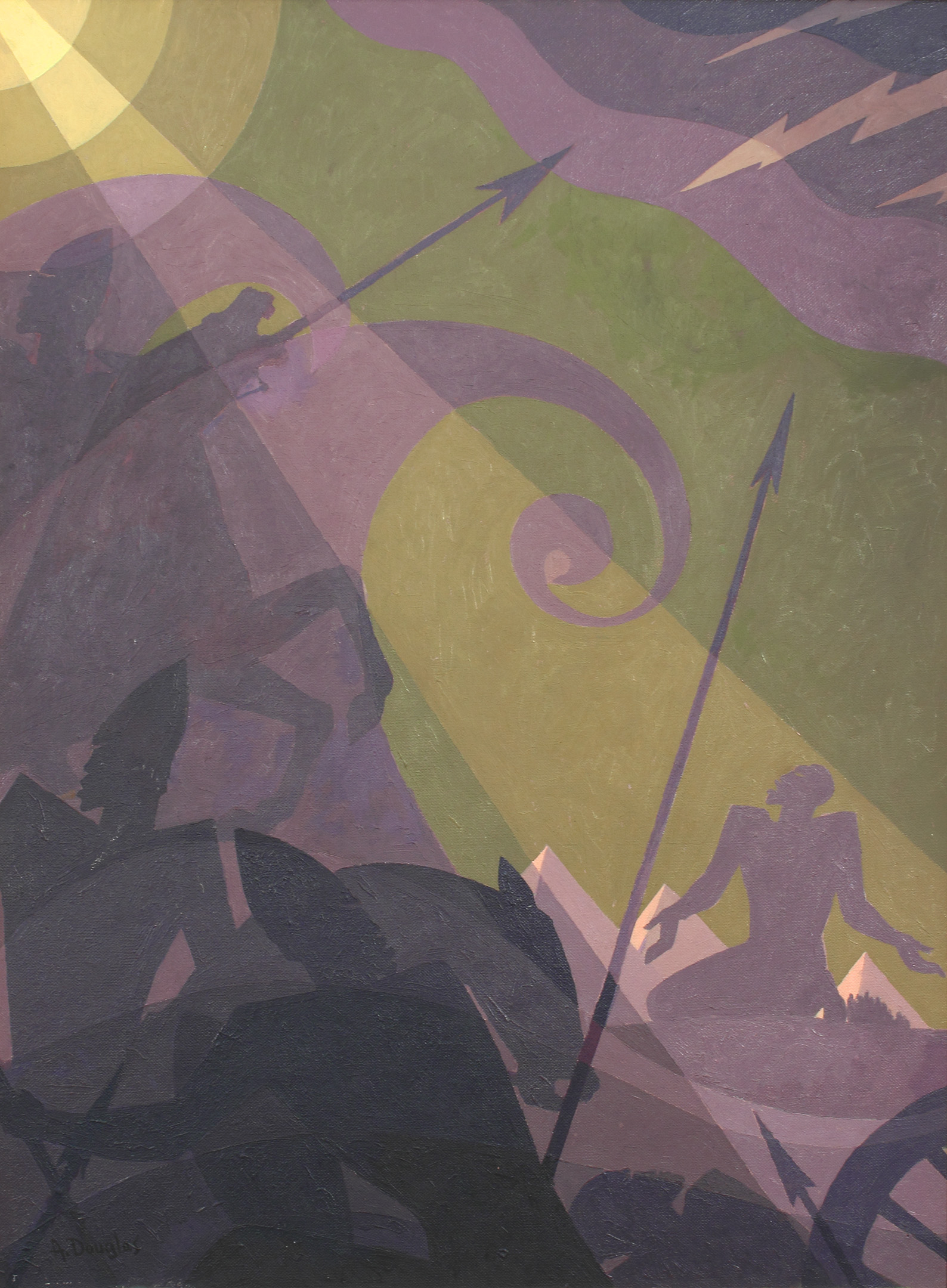
NEW YORK – The Metropolitan Museum of Art and the National Gallery of Art in Washington have each acquired a significant work by the leading visual artist of the Harlem Renaissance, Aaron Douglas (American, 1899–1979). The two paintings, Let My People Go (ca. 1935–1939, Metropolitan Museum of Art), and The Judgment Day (1939, National Gallery of Art), derive from the acclaimed series Douglas created for James Weldon Johnson’s 1927 publication God’s Trombones: Seven Negro Sermons in Verse.
Together, these critical acquisitions assure that the artist’s rare easel paintings are represented in two of the nation’s most prominent public collections. Both were acquired from the private collector who purchased the works from Douglas in 1978. Let My People Go is on view in Gallery 900 of the Met’s Lila Acheson Wing for modern and contemporary art. The Judgment Day will go on view this summer in the National Gallery of Art’s West Building, American Galleries.
Aaron Douglas was born in Topeka, Kan. After receiving a B.A. from the University of Nebraska (1922) and teaching art at an elite public high school for black students in Kansas City, Mo., Douglas moved to the Harlem neighborhood of New York City, the cultural capital of black America throughout the early 20th century.
In New York, Douglas studied art with the German modernist Winold Reiss, who first encouraged him to celebrate his “race pride” by incorporating African motifs and themes into his art. He also suggested that Douglas embrace an Art Deco aesthetic expressive of the modern Jazz Age.
Douglas quickly became an influential figure in the Harlem Renaissance, contributing his distinctive black-and-white graphic work to African American publications such as the NAACP’s Crisis – whose editor, W.E.B. Du Bois, was a great supporter of the artist – and the National Urban League’s Opportunity, as well as Vanity Fair.
The artist’s centrality in the Harlem Renaissance’s cultural ferment was underscored when, in 1925, the literary critic and professor Dr. Alain Locke invited Douglas to contribute to The New Negro: An Interpretation, one of the most influential texts of the period.
At the age of 28, Douglas was invited by James Weldon Johnson to contribute illustrations to another revered Harlem Renaissance book, God’s Trombones: Seven Negro Sermons in Verse, which the author based on traditional religious oratory. The resulting eight accompaniments to Johnson’s poems rank among Douglas’ most accomplished works. Douglas revisited, enlarged, and revised his eight compositions for God’s Trombones in easel paintings (on Masonite) through the 1930s. As the subjects appeared in God’s Trombones, the painting Let My People Go is the seventh in the sequence of eight images illuminating Johnson’s prose, with The Judgment Day as the eighth.
Heralded as a muralist, Douglas painted Aspects of Negro Life, an ambitious mural cycle, under the auspices of the Public Works of Art Project for the 135th Street branch of the New York Public Library, now home of the Schomberg Center for Research in Black Culture.
Douglas served as professor of art at Fisk University, in Nashville, Tenn., from 1939 until his retirement in 1966. The fifth work in the series, Noah Built the Ark (1927), is in the collection of Fisk University Galleries.

